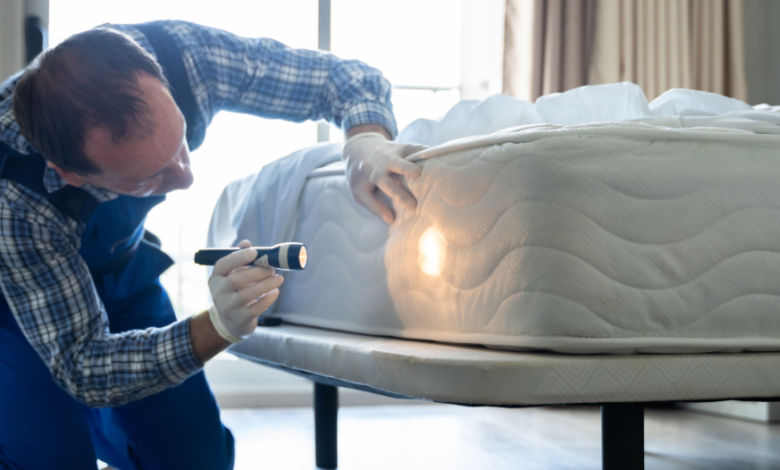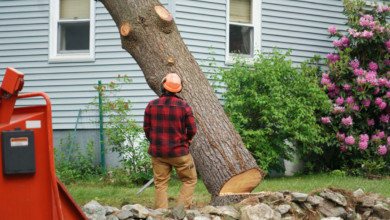Travel Essentials to Prevent Bed Bug Hitchhikers

Introduction
Traveling is an exciting experience, but it can quickly turn into a nightmare if you unknowingly bring home unwanted guests—bed bugs. These tiny, blood-sucking pests are notorious hitchhikers, easily latching onto luggage, clothing, and personal items. Once they infest your home, they can be extremely difficult and expensive to eliminate.
Fortunately, with the right precautions, you can minimize the risk of encountering bed bugs during your travels. This article outlines essential travel tips and products to help you avoid bed bug infestations and enjoy a worry-free trip.
Understanding Bed Bugs
Before diving into prevention strategies, it’s important to understand what bed bugs are and why they’re a problem.
- Appearance: Small, reddish-brown insects about the size of an apple seed.
- Behavior: Nocturnal pests that feed on human blood, often hiding in mattresses, furniture, and luggage.
- Signs of Infestation: Tiny blood stains on sheets, dark fecal spots, shed skins, and a musty odor.
Bed bugs ( væggelus ) don’t transmit diseases, but their bites can cause itching, allergic reactions, and significant stress. Since they spread easily, prevention is key.
Essential Travel Items to Prevent Bed Bugs
Packing the right gear can make a huge difference in keeping bed bugs at bay. Here are the must-have items for any traveler:
1. Hard-Shell Luggage
Bed bugs find it harder to cling to smooth, hard surfaces compared to fabric suitcases. Opt for hard-shell luggage with minimal crevices where bugs can hide.
2. Luggage Encasements (Bed Bug-Proof Covers)
Specialized luggage encasements act as a protective barrier, preventing bed bugs from entering your bags. These covers are typically made from tightly woven fabric that bugs cannot penetrate.
3. Packing Cubes with Insect-Repellent Fabric
Some packing cubes are treated with permethrin, a safe insect repellent that deters bed bugs. These help keep your clothes protected inside your luggage.
4. Portable Bed Bug Detector
Small, portable bed bug detectors use heat or CO₂ to attract and trap bed bugs. Placing one in your hotel room can help you identify an infestation early.
5. Travel-Sized Bed Bug Spray
EPA-approved bed bug sprays can be used to treat luggage, shoes, and other items before bringing them into your home. Look for natural options with essential oils like tea tree or lavender for a chemical-free alternative.
See also: Solar Panel Laws in 2025: What Every Homeowner Needs to Know Before Installing
6. Sealable Plastic Bags (Ziploc or Vacuum Bags)
Packing clothes and personal items in sealable plastic bags prevents bed bugs from accessing them. Vacuum-sealed bags also save space and add an extra layer of protection.
7. Portable Luggage Stand
Avoid placing your luggage on the floor, bed, or upholstered furniture where bed bugs may hide. A foldable luggage stand keeps your bag elevated and away from potential infestations.
8. Flashlight for Inspections
A small, bright flashlight helps you inspect hotel rooms, mattresses, and furniture for signs of bed bugs before settling in.
9. Clothing Dryer Sheets (Optional)
Some travelers swear by scented dryer sheets (like lavender or eucalyptus) as a mild deterrent for bed bugs. While not scientifically proven, they may help mask human scent, making it harder for bugs to detect you. For more read https://vaeggelus-fri.dk/
10. Disposable Laundry Bags
After traveling, immediately place your clothes in a disposable laundry bag and wash them in hot water. This prevents any potential hitchhikers from spreading in your home.
How to Inspect Your Hotel Room for Bed Bugs
Even with the best prevention tools, it’s crucial to inspect your accommodation upon arrival. Follow these steps:
1. Leave Luggage in the Bathroom
Bathrooms (especially tiled floors) are less likely to harbor bed bugs. Keep your luggage here while inspecting the room.
2. Check the Mattress and Bedding
- Pull back sheets and inspect mattress seams, especially near the headboard.
- Look for tiny black spots (fecal stains), shed skins, or live bugs.
- Use a flashlight to examine crevices and folds.
3. Inspect Furniture and Curtains
- Check upholstered chairs, sofas, and curtains.
- Look behind picture frames and under lamps.
4. Examine Luggage Racks and Closets
- If using a luggage rack, inspect it thoroughly before placing your bag.
- Avoid storing clothes in hotel drawers unless necessary.
5. Notify Management Immediately if Bugs Are Found
If you spot bed bugs, request a new room (preferably in a different building) or switch hotels altogether.
Post-Travel Bed Bug Prevention Tips
Your efforts shouldn’t stop once you return home. Take these steps to ensure no bed bugs sneak in:
1. Unpack Outside or in the Garage
Avoid bringing luggage inside right away. Unpack outdoors or in a garage if possible.
2. Wash and Dry Clothes on High Heat
- Wash all clothing (even unworn items) in hot water.
- Dry on high heat for at least 30 minutes to kill any hidden bugs.
3. Freeze Non-Washable Items
For delicate items, seal them in a plastic bag and freeze them for at least four days to kill bed bugs.
4. Vacuum and Inspect Luggage
- Use a vacuum with a HEPA filter to clean luggage thoroughly.
- Wipe down hard-shell suitcases with a disinfectant spray.
5. Store Luggage Properly
Keep suitcases in sealed plastic bins or bags when not in use to prevent any lingering bugs from escaping.
Conclusion
Bed bugs are a traveler’s worst nightmare, but with the right precautions, you can significantly reduce the risk of bringing them home. Investing in bed bug-proof luggage, using protective covers, and conducting thorough inspections can save you from costly and stressful infestations.
By following these travel essentials and post-trip cleaning routines, you can enjoy your adventures without worrying about unwanted hitchhikers. Stay vigilant, pack smart, and travel safely!




